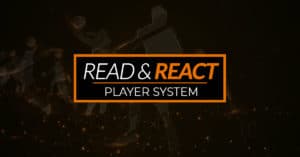The Read & React as a whole has all of the complexities needed to beat any defense at any level. This is because it coordinates five players using multiple basketball actions linked randomly together. But, that’s not the whole story.
It has been noted by almost everyone who has looked at the Read & React system that each layer of the offense is simple. A layer consists of actions of a ball handler followed by the reactions of those without the ball. Both the actions and reactions are simple. If you pass, then you cut. If there is an open spot, fill it. Simple.
So, how can the simple actions available to the ball handler and the simple reactions required of the non-ball handlers be so effective?
Because simplicity allows us to be decisive and aggressive.
When the offense is decisive and aggressive, it forces the defense to react. And, if all else is equal, the initiator will beat the reactor most of the time. This accounts for the success of the Read & React even when it isn’t executed perfectly and/or when it hasn’t been completely mastered.
Here’s a question I get all the time. “How do I know when to add another layer?”
In the past, I’ve answered this several ways, but it comes down to this. Your team is only ready for another layer when the addition of that layer won’t interfere with your team’s decisiveness or aggressiveness.
Now, remember that first paragraph where I mentioned the complexity of five players moving as one, performing multiple actions in a random order. Imagine that complexity with decisiveness and aggressiveness. Ultimately, that is your goal.






